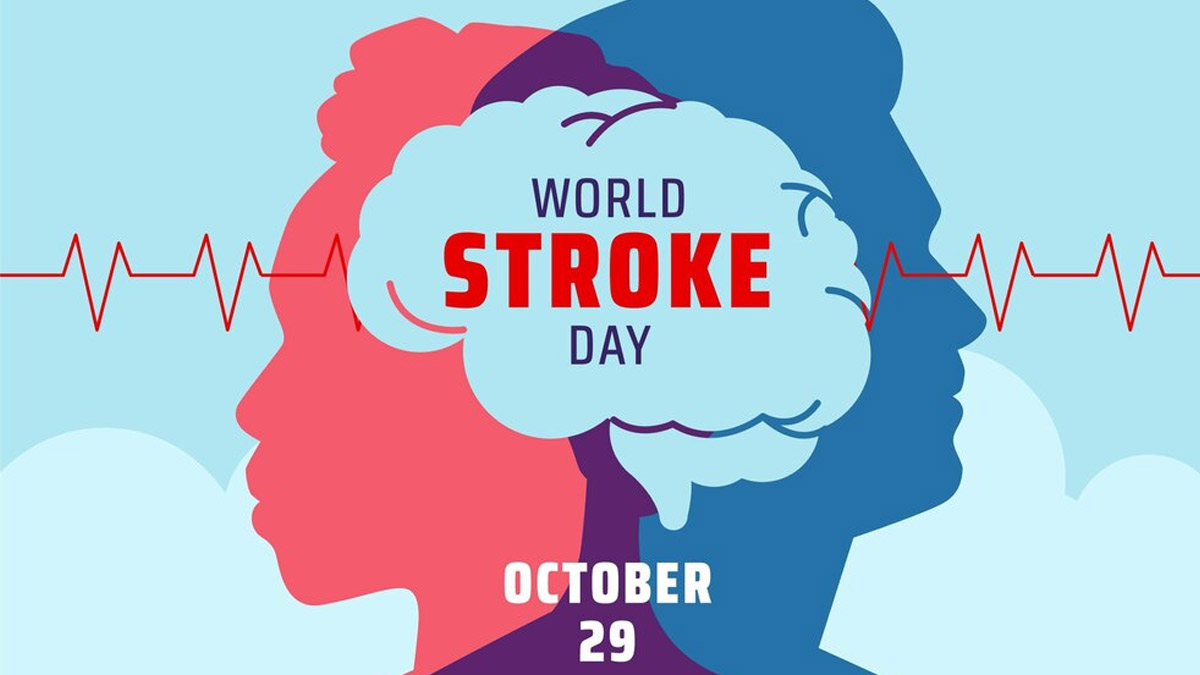
Did you know that stroke is the leading cause of disability and the second leading cause of death worldwide? It occurs when blood flow to the brain is disrupted or stopped. According to the World Health Organization (WHO), 1.5 crore people worldwide experience a stroke each year, with 50 lakh people dying and 50 lakh becoming permanently disabled.
Table of Content:-
But here's the good news: up to 80% of strokes are preventable.
This World Stroke Day, observed annually in October, we spoke with Dr Bhargavi Ramanujam, Senior Consultant Neurologist at PSRI Hospital, New Delhi, who shared effective strategies to reduce stroke risk.
Know All About Early Stroke Symptoms

“The most common early warning signs of a stroke that people should watch out for include sudden weakness or numbness in the arm, leg, or face, particularly on one side of the body,” shared Dr Ramanujan, adding that people can also experience confusion, difficulty speaking, or comprehending speech accompanied by visual problems in one or both eyes.
In certain cases, patients may also have severe headaches without a known cause, difficulty walking, loss of balance, dizziness, and lack of coordination.
Preventive Strategies
Making healthy lifestyle choices can help prevent stroke. These include:
Healthy eating
According to the US Centers for Disease Control and Prevention (CDC), a healthy and balanced diet usually includes eating plenty of fresh fruits and vegetables. Additionally, consuming foods low in saturated fats, trans fats, and cholesterol and high in fibre can help prevent high cholesterol. Reducing salt intake in one's diet can also lower blood pressure levels. Both of these health conditions can increase a person's risk of stroke.
Dr Ramanujan recommended aiming to consume less than 1500 mg of salt per day. In addition, he warned against high-cholesterol foods like cheese and burgers, among others. Instead, one must choose a diet rich in fruits, veggies, and whole grains along with a serving of fish at least two to three times in a week.
Quit smoking And Limit Alcohol Intake
Dr Ramanujan advised avoiding smoking and being exposed to secondhand smoke, along with limiting alcohol intake. A 2015 study published in the American Journal of Preventive Medicine found that individuals exposed to secondhand smoke were 30% more likely to experience a stroke compared to those not exposed. This increased risk was primarily associated with ischaemic strokes. Secondhand smoke exposure is when people breathe in smoke breathed out by people who smoke.
Research also suggests that high and moderate alcohol intake increased the risk of all types of stroke, including ischaemic stroke and intracerebral haemorrhage. However, low alcohol intake was not associated with an increased risk of stroke overall.
Exercise regularly
To prevent stroke, regular physical activity is also crucial. This is because exercise helps lower blood pressure, which is one of the leading causes of stroke. It also aids in weight management, reducing the risk of obesity, a condition linked to higher stroke risk. Moreover, physical activity boosts cardiovascular fitness, lowering bad cholesterol and raising good cholesterol, both of which are important for keeping blood vessels healthy.
Young People And The Increasing Risk Of Stroke![]()
Dr Ramanujam highlighted that rising rates of obesity, diabetes, physical inactivity, and high blood pressure are major contributors to the increasing incidence of stroke among young people, leading to cases at earlier ages. “To reduce this risk, adopting a healthy lifestyle is essential—one that includes a nutritious diet, regular physical exercise, and stress management through practices like yoga and meditation. Avoiding smoking and alcohol consumption is also crucial,” he concluded.
Also watch this video
How we keep this article up to date:
We work with experts and keep a close eye on the latest in health and wellness. Whenever there is a new research or helpful information, we update our articles with accurate and useful advice.
Current Version
